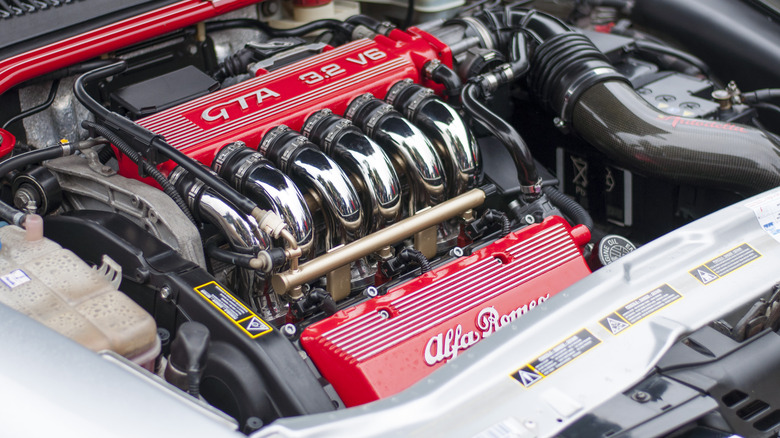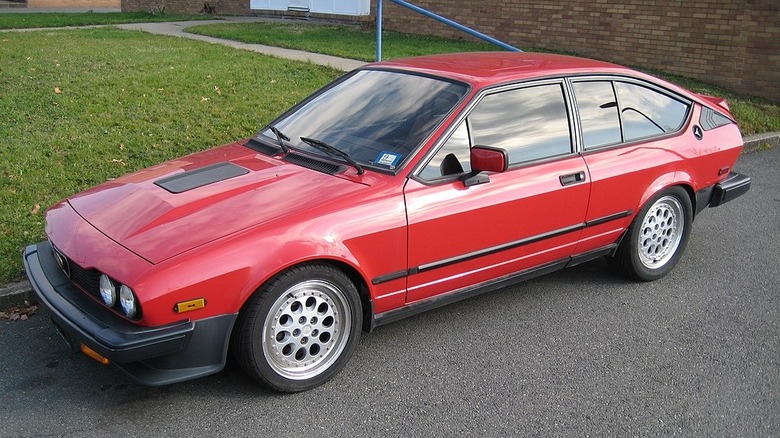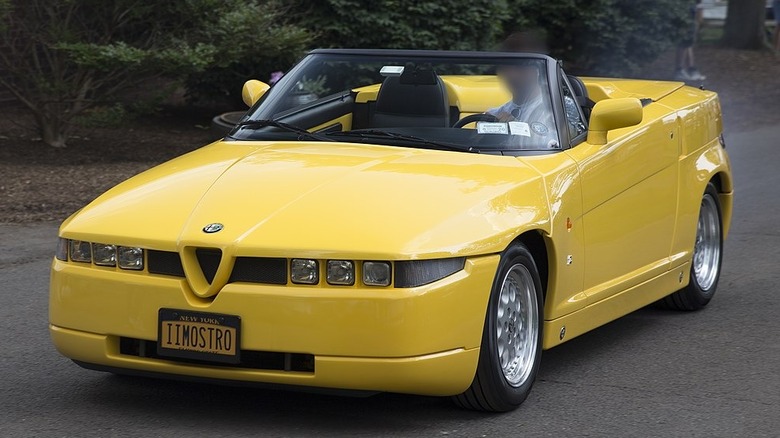Here's What Made The Alfa Romeo Busso V6 So Special
Former "Top Gear" presenter Jeremy Clarkson once said, "You can't be a true petrolhead until you've owned an Alfa Romeo." Several years later, Clarkson would bomb across Scotland's North Coast 500 in a red Alfa Romeo for Amazon's car show "The Grand Tour." Despite some reliability issues, Clarkson fell so in love with the machine that he purchased it post-filming. That Alfa was a GTV6, powered by none other than the iconic Busso V6 engine, named after famed engineer Giuseppe Busso.
But we're getting ahead of ourselves. In the late 1960s, Alfa Romeo was riding a wave of success and had some new designs in the works. To power these larger vehicles, engineers wanted a V6 to supplement the company's existing four-cylinder engines. The man chosen to spearhead the program, Giuseppe Busso, was a former technical director at Ferrari, instrumental in developing the brand's first in-house engine, a V12.
Busso's V6 was already in an advanced testing stage by the early 1970s. The impending worldwide oil crisis dealt a blow to automakers and small outfits like Alfa, whose fortunes had recently dwindled. So the V6 project was put on hold for several dark years but eventually launched with aplomb in 1979.
It had a fussy fuel system
For durability, the Busso V6 had a forged steel crankshaft and connecting rods, although Alfa cheaped out a little by using cast pistons. The valvetrain was a simple dual overhead cam arrangement, but the fuel delivery system was anything but simple.
By the late 1970s, electronic fuel injection was becoming the norm for foreign cars. Still, Busso felt that better throttle response could be achieved with individual fuel delivery to each cylinder, so he fitted a brace of six Dell'Orto carburetors. You'd be correct if you think six carbs sound like a nightmare to tune and maintain. Fortunately, technology caught up to Busso's vision, and the carburetors were eventually dumped in favor of Bosch L-Jetronic fuel injection.
The first Alfa to be fitted with the new V6 was the brand's sporty fastback coupe, the GTV6. Based on that success, the Busso V6 became increasingly available across Alfa Romeo's lineup, including a U.S. market sedan called the Milano.
So how much power did this famous V6 make? The original 2.5-liter variant was good for 156 horsepower. That's hardly a fire-breathing monster, but remember that this was when Chevy's Corvette only made 190 horsepower from its large V8.
[Featured image by JOHN LLOYD via Wikimedia Commons | Cropped and scaled | CC BY 2.0]
Busso died when his accomplishment did
Though not the most powerful V6 on the market, and certainly not the most reliable, one thing car enthusiasts could universally praise the Busso engine for was its glorious exhaust note. The engine earned the nickname "Alfa's Violin" or "Aresse's Violin," after the city where the factory was located. In 2011, EVO magazine declared that "the original Alfa Romeo V6 was the most glorious-sounding six-cylinder road engine ever."
In later years, Alfa Romeo's V6 underwent many changes, including a larger bore and stroke, four valves per cylinder, adaptation to front-wheel drive, and a turbocharger. And who could forget its role in the limited edition R.Z. and S.Z. experimental sports cars? In its most potent form, a 2002 and later version termed the "Big Bossa," it managed 247 horsepower from 3.2 liters displacement.
The last batch of Alfa V6s was manufactured on December 31, 2005, and in a sad coincidence, Giuseppe Busso himself passed away only a few days later. Reportedly, there was such a large stockpile of engines that they were installed in new cars as late as 2010.
[Featured image by Mr.choppers via Wikimedia Commons | Cropped and scaled | CC BY-SA 3.0]


